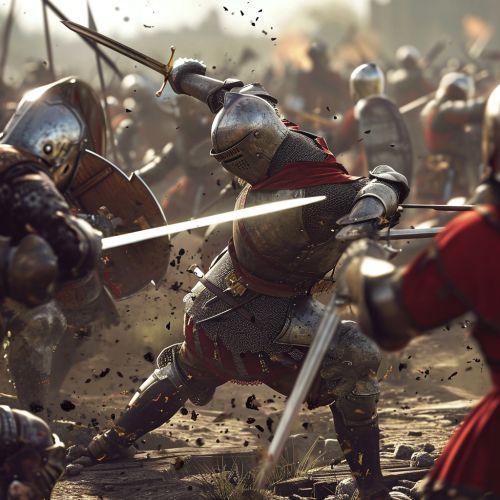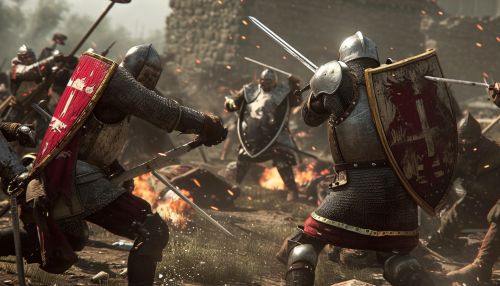Wars of the Roses
Origins of the Conflict
The Wars of the Roses were a series of civil wars fought in medieval England between the House of Lancaster and the House of York. The name "Wars of the Roses" is derived from the badges used by the two sides: a red rose for the Lancasters and a white rose for the Yorks. The conflict originated from social and financial troubles following the Hundred Years' War, coupled with the mental infirmity and weak rule of King Henry VI, which revived interest in Richard, Duke of York's claim to the throne.
House of Lancaster vs House of York
The House of Lancaster was a branch of the English royal House of Plantagenet. Its symbol was a red rose, and its members were descendants of King Henry III's younger son, Edmund, Earl of Lancaster. The House of York, represented by a white rose, was another branch of the Plantagenets, descended from Edward III's second surviving son, Edmund of Langley, Duke of York. The rivalry between these two houses was the main driving force behind the Wars of the Roses.
Major Battles
The Wars of the Roses consisted of several significant battles, including the Battle of St Albans, the Battle of Towton, the Battle of Barnet, and the Battle of Tewkesbury. Each of these battles played a crucial role in shaping the course of the wars and the future of England.


Battle of St Albans
The Battle of St Albans, fought on 22 May 1455, was the first major battle of the Wars of the Roses. The Yorkists, led by Richard, Duke of York, defeated the Lancastrians under the command of Edmund Beaufort, Duke of Somerset, who was killed in the battle. This victory marked the beginning of the Yorkist challenge to the Lancastrian rule.
Battle of Towton
The Battle of Towton, fought on 29 March 1461, was one of the largest and bloodiest battles of the Wars of the Roses. The Yorkist forces, now led by Edward IV, defeated the Lancastrian army, resulting in a decisive victory that led to Edward's coronation as king.
Battle of Barnet
The Battle of Barnet, fought on 14 April 1471, marked a turning point in the Wars of the Roses. Edward IV, leading the Yorkist forces, defeated the Lancastrian army led by Richard Neville, Earl of Warwick, also known as "Warwick the Kingmaker". Warwick was killed in the battle, which significantly weakened the Lancastrian cause.
Battle of Tewkesbury
The Battle of Tewkesbury, fought on 4 May 1471, was the final major battle of the Wars of the Roses. Edward IV's decisive victory over the Lancastrians led to the death of Edward, Prince of Wales, and effectively ended the Lancastrian line of succession.
Aftermath and Legacy
The Wars of the Roses ended with the Battle of Bosworth Field in 1485, where Henry Tudor, a distant claimant to the throne from the House of Lancaster, defeated Richard III, the last Yorkist king. Henry was crowned as Henry VII, founding the House of Tudor, which ruled England for the next 118 years. The Wars of the Roses had a profound impact on England, leading to significant political and social changes, including the end of feudalism and the beginning of the English Renaissance.
